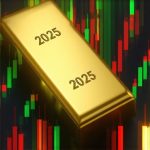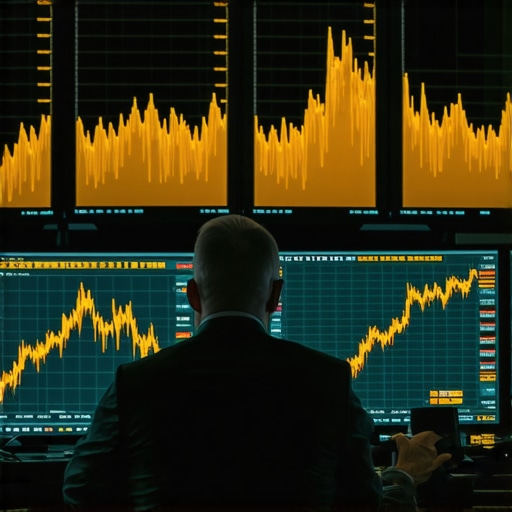Unlocking Gold Trading Mastery: Strategic Foundations for 2025
As the global economic landscape increasingly favors diversification and hedging against inflationary pressures, gold trading remains a pivotal arena for both novice investors and seasoned professionals. Understanding the intrinsic dynamics of gold markets in 2025 demands a nuanced approach that integrates technical skills with macroeconomic insights, ensuring traders capitalize on volatility and sustained demand. This expert guide delves into essential gold trading techniques, balancing foundational knowledge with sophisticated strategies tailored for evolving market conditions.
Integrating Macroeconomic Indicators with Technical Analysis for Gold Trading Excellence
Successful gold trading hinges on harmonizing macroeconomic data—such as inflation rates, central bank policies, and currency fluctuations—with rigorous technical analysis. Traders must interpret indicators like the Consumer Price Index (CPI) and Federal Reserve interest rate decisions to anticipate price movements accurately. Leveraging tools such as moving averages, Relative Strength Index (RSI), and Fibonacci retracements enables precise entry and exit timing, optimizing profit margins while mitigating risk.
How Do Central Bank Gold Purchases Influence Market Dynamics in 2025?
Central banks’ strategic accumulation of gold reserves significantly impacts global demand trajectories and price stability. Their purchases serve as a barometer for geopolitical uncertainty and monetary policy direction, often catalyzing price surges or corrections. Traders who monitor central bank activities gain a competitive edge by aligning their positions with these macro-level demand signals, enhancing forecasting accuracy and market responsiveness. For in-depth analysis, refer to central bank gold buying and its influence on global demand.
Advanced Risk Management and Position Sizing Techniques for Volatile Gold Markets
In 2025, gold markets exhibit pronounced volatility driven by geopolitical tensions and shifting economic policies. Employing advanced risk management strategies such as dynamic position sizing, stop-loss orders calibrated to market volatility, and diversification across gold instruments (futures, ETFs, physical bars) is imperative. Experts advocate for a risk-to-reward ratio tailored to individual trading profiles, incorporating scenario analysis to anticipate adverse market swings and preserve capital integrity.
Utilizing Diverse Gold Investment Vehicles: Beyond Physical Gold
Contemporary traders benefit from a spectrum of gold investment options, ranging from physical bullion and coins to gold futures contracts and exchange-traded funds (ETFs). Each vehicle presents unique liquidity profiles, cost structures, and exposure levels. For example, gold futures offer leveraged opportunities but require mastery of contract specifications and margin requirements, whereas ETFs provide accessible portfolio diversification with lower entry barriers. Exploring these instruments expands tactical versatility and aligns investment horizons with strategic objectives (understanding types of gold investments).
Actionable Insights: How to Build a Balanced Gold Portfolio for Maximum Growth
Constructing a balanced portfolio entails integrating various gold assets to optimize growth while hedging against market downturns. Strategic allocation between physical gold, ETFs, and futures contracts, combined with continuous portfolio rebalancing, enables traders to harness sector-specific trends and macroeconomic shifts. This approach is critical for sustaining long-term profitability and capital preservation amidst fluctuating market conditions (building a balanced gold portfolio).
Expert-Level CTA: Deepen Your Gold Trading Expertise Today
For traders eager to elevate their proficiency, explore our comprehensive resources on mastering gold trading techniques for consistent profit in 2025. Engage with our expert community to share insights and refine your strategies in response to real-time market evolutions.
According to a detailed report by the World Gold Council, gold remains a critical asset for portfolio diversification and wealth preservation amid economic uncertainties (World Gold Council Gold Demand Trends).
Leveraging Sentiment Analysis and AI for Predictive Gold Trading
In the rapidly evolving gold market of 2025, integrating sentiment analysis powered by artificial intelligence (AI) has become a cutting-edge strategy. Sentiment analysis deciphers market psychology by evaluating news, social media, and geopolitical developments to forecast gold price movements. AI algorithms process vast datasets to identify patterns and anomalies that human traders might overlook, providing a tactical advantage in volatile environments. This fusion of technology and market expertise empowers traders to anticipate shifts more effectively and make data-driven decisions.
Innovative Hedging Approaches Using Gold Derivatives
Advanced investors increasingly utilize gold derivatives not merely for speculation but as sophisticated hedging tools. Options on gold futures, for instance, allow tailored risk mitigation by structuring protective puts or covered calls, balancing potential gains against downside exposure. Additionally, strategies such as calendar spreads and straddles offer nuanced approaches to benefit from expected volatility or stable price ranges. Mastering these instruments requires a deep understanding of contract mechanics and market sentiment, but they can significantly enhance portfolio resilience in uncertain economic climates.
Dynamic Portfolio Adjustment: Adapting to Real-Time Data and Market Signals
Successful gold traders in 2025 embrace dynamic portfolio management, continuously adjusting allocations based on real-time market signals and economic indicators. This approach involves agile rebalancing in response to inflation reports, currency movements, and geopolitical events, ensuring exposure aligns with evolving risk profiles and opportunity windows. Employing algorithmic trading platforms can facilitate this process by executing timely trades while maintaining strategic discipline.
What Role Does ESG (Environmental, Social, Governance) Considerations Play in Gold Investment Decisions?
As sustainability becomes paramount in global finance, ESG factors increasingly influence gold investment choices. Mining practices, ethical sourcing, and corporate governance of gold producers affect investor sentiment and regulatory landscapes. Traders and investors who integrate ESG criteria may not only align with ethical standards but also anticipate shifts in supply dynamics and market valuations. Understanding how ESG trends intersect with gold demand is crucial for crafting forward-looking investment strategies that balance profitability with responsibility.
For comprehensive insights on ESG impacts and gold market trends, the World Gold Council provides authoritative research and data-driven analysis (World Gold Council: ESG and Gold).
Enhancing Your Gold Trading Strategy: Continuous Education and Community Engagement
To maintain an edge in the competitive gold trading arena, ongoing education is indispensable. Engaging with expert-led webinars, subscribing to market analysis newsletters, and participating in specialized forums can refine your strategies and adapt to market innovations. Share your experiences and learn from peers by joining our vibrant community focused on mastering gold trading techniques for consistent profit. Collaborative learning accelerates skill development and fosters resilience amidst market fluctuations.
Harnessing Machine Learning and Sentiment Indices for Superior Gold Market Forecasting
Building on the integration of sentiment analysis with AI, machine learning models now enable traders to decode complex interdependencies between global macroeconomic factors and gold price fluctuations. These models ingest diverse data streams—from geopolitical event feeds to currency volatility indices—to generate probabilistic forecasts that refine entry and exit points beyond traditional technical analysis. By deploying ensemble learning methods, traders can mitigate overfitting risks and adapt to nonlinear market behaviors, thus enhancing predictive accuracy in volatile environments.
Moreover, natural language processing (NLP) techniques extract nuanced sentiment from central bank statements, financial news, and social media chatter, translating qualitative data into quantifiable trading signals. This quantitative sentiment scoring complements classic indicators like RSI and moving averages, creating a hybrid strategy that balances quantitative rigor with real-time market sentiment awareness.
Expert Insight: How Do Machine Learning Models Adjust to Sudden Geopolitical Shocks in Gold Trading?
Machine learning models deployed in gold trading are designed to dynamically recalibrate their parameters when confronted with abrupt geopolitical shocks, such as sanctions, conflicts, or unexpected policy announcements. Utilizing techniques such as reinforcement learning, these models learn optimal decision-making policies through continuous feedback loops, improving resilience against black swan events. Additionally, anomaly detection algorithms flag outlier market behavior, prompting traders to reassess position sizing and hedging strategies promptly.
For a detailed exposition on adaptive AI frameworks in commodity trading, consult the International Journal of Financial Engineering, which explores state-of-the-art methodologies for real-time adjustment in trading algorithms.
Integrating ESG Metrics into Quantitative Gold Trading Models: A Paradigm Shift
Incorporating Environmental, Social, and Governance (ESG) criteria within algorithmic gold trading represents a frontier in responsible investment strategies. Quantitative models now embed ESG scores of mining companies and sovereign risk indicators to predict supply-side constraints and potential regulatory risks. For instance, stringent environmental regulations can reduce mine output, tightening supply and influencing gold prices. By quantifying these factors, traders can anticipate market shifts that traditional financial metrics might overlook.
This integration also aligns with growing investor demand for sustainable portfolios, potentially attracting capital inflows that impact gold market liquidity and valuations. Such ESG-aware trading strategies require multidisciplinary expertise, combining financial analytics with sustainability science.
Cutting-Edge Hedging Techniques: Leveraging Volatility Derivatives and Exotic Options
Beyond conventional gold futures and options, sophisticated traders employ volatility derivatives—such as VIX-linked products and variance swaps—to hedge against sudden price swings in gold markets. These instruments allow finely tuned exposure to implied volatility, offering protection during periods of heightened uncertainty without the directional bias of standard options.
Furthermore, exotic options like barrier options and Asian options provide tailored payoff structures that can optimize risk-reward profiles amid complex market conditions. Mastery of these products demands rigorous quantitative skills, including stochastic calculus and advanced scenario modeling, but can yield superior hedging efficiency and strategic flexibility.
Real-Time Risk Management: Algorithmic Execution and Stress Testing Frameworks
As execution speed becomes paramount, algorithmic trading platforms integrate real-time risk analytics to monitor exposure limits, liquidity constraints, and slippage risks dynamically. Advanced stress testing frameworks simulate extreme scenarios—such as rapid inflation spikes or abrupt central bank interventions—to evaluate portfolio robustness. Traders equipped with these tools can preemptively adjust positions, ensuring capital preservation under adverse conditions.
How Can Traders Effectively Balance Algorithmic Automation with Discretionary Judgment in Gold Trading?
While algorithmic systems excel at processing vast data and executing trades swiftly, discretionary judgment remains crucial for interpreting macroeconomic narratives and geopolitical nuances that quantitative models may not fully capture. Effective traders blend systematic strategies with human oversight, using algorithmic signals as decision support rather than absolute directives. This hybrid approach enables adaptability and mitigates risks stemming from model limitations or unexpected market behavior.
Expand Your Expertise with Specialized Resources and Collaborative Platforms
To unlock these advanced methodologies, consider engaging with specialized courses on AI-driven trading and ESG integration offered by leading financial institutions. Participating in expert-led forums and workshops fosters knowledge exchange and practical insights. Begin your journey by exploring our curated resource hub focused on mastering gold trading techniques for consistent profit in 2025, where innovation meets experience.
Decoding the Fusion of AI-Driven Analytics and ESG Metrics in Contemporary Gold Markets
As global financial ecosystems pivot towards sustainability and technological sophistication, the confluence of artificial intelligence (AI) and Environmental, Social, and Governance (ESG) criteria is redefining gold trading paradigms. Beyond traditional price forecasting, AI-powered analytics now integrate ESG datasets—ranging from mining company carbon footprints to social responsibility indices—yielding a multidimensional perspective that anticipates regulatory shifts and supply chain disruptions with unprecedented granularity.
Strategic Implications of ESG-Aware AI Models on Gold Supply and Demand Dynamics
AI models enriched with ESG parameters enable traders to simulate scenarios where environmental regulations or governance reforms materially affect mine production or investor sentiment. For instance, tightening environmental policies may curtail extraction in key regions, constricting supply and elevating prices. On the demand side, ESG-conscious institutional investors increasingly prefer gold sourced from responsible operations, influencing market liquidity and valuation trends. This advanced modeling facilitates proactive positioning, hedging against emerging ESG risks, and capitalizing on sustainable investment flows.
How Can AI-Enhanced Sentiment Analysis Capture Nuanced ESG Trends Impacting Gold Prices?
AI-driven sentiment analysis employs natural language processing (NLP) to dissect textual data from regulatory announcements, sustainability reports, and social media discourse, extracting subtle shifts in stakeholder attitudes toward gold mining practices. By quantifying ESG sentiment fluctuations, traders gain early warnings of reputational risks or policy changes that may affect gold valuations. This layer of insight complements conventional financial metrics, enabling a holistic strategy that balances ethical considerations with profitability.
For an authoritative exploration of ESG integration in gold analytics, consult the World Gold Council’s dedicated research on ESG and gold market intersections (World Gold Council: ESG and Gold).
Next-Generation Hedging: Synthesizing Volatility Derivatives with AI Forecasts
Emerging hedging frameworks exploit volatility derivatives such as variance swaps, calibrated through AI-generated forecasts that adapt to real-time geopolitical and economic signals. This synthesis allows traders to hedge with precision against sudden market dislocations while optimizing cost structures. Furthermore, exotic options strategies, informed by machine learning algorithms, dynamically adjust strike prices and expiration dates to reflect anticipated volatility regimes, enhancing risk-adjusted returns.
Real-Time Algorithmic Risk Management Harnessing AI-Powered Scenario Stress Testing
Advanced algorithmic platforms incorporate AI-driven stress testing that simulates multifaceted market shocks, including inflation spikes, policy shifts, and ESG-related supply shocks. These simulations inform dynamic risk limits and automated position adjustments, preserving capital under extreme conditions. Additionally, anomaly detection algorithms monitor for deviations from normative patterns, prompting discretionary review and strategy refinement.
What Are the Best Practices to Balance Automated AI Trading Systems with Human Discretion in Gold Markets?
While AI systems excel in processing vast, complex datasets and executing trades with speed and consistency, human oversight remains indispensable for interpreting geopolitical narratives and ESG subtleties that algorithms may inadequately contextualize. Best practices advocate a hybrid approach where AI-generated signals inform but do not dictate trading decisions. Traders should apply discretionary judgment to validate AI outputs, customize risk parameters, and respond to emergent qualitative factors, thereby optimizing strategy robustness and adaptability.
Engage with Pioneering Tools and Communities to Elevate Your Gold Trading Mastery
To capitalize on these innovations, immerse yourself in specialized educational programs focusing on AI integration and ESG analytics within commodity markets. Join expert forums and collaborative platforms to exchange cutting-edge strategies and empirical findings. Begin your advanced learning journey by visiting our comprehensive resource center dedicated to mastering gold trading techniques for consistent profit in 2025, where innovation meets seasoned expertise.

Expert Insights & Advanced Considerations
Integrating ESG Metrics Elevates Gold Trading Strategies Beyond Conventional Analysis
Incorporating Environmental, Social, and Governance criteria into gold trading models is no longer optional but essential. ESG factors influence supply constraints and investor preferences, directly impacting market dynamics. Traders who embed ESG data into quantitative frameworks can better anticipate regulatory impacts and capitalize on sustainability-driven demand shifts, gaining a multidimensional edge.
Explore ESG and gold market dynamics.
AI-Enhanced Sentiment Analysis Transforms Predictive Accuracy in Volatile Markets
Artificial intelligence algorithms leveraging natural language processing extract nuanced market sentiment from diverse sources, including central bank communications and social media. This approach complements traditional technical indicators, allowing traders to capture real-time shifts in investor psychology and geopolitical risk, thereby refining entry and exit timing in gold trading.
Master AI-driven trading techniques.
Advanced Hedging with Volatility Derivatives Enhances Portfolio Resilience
Sophisticated traders increasingly use volatility derivatives and exotic options to hedge against erratic gold price movements. Instruments like variance swaps and barrier options provide tailored risk profiles that traditional futures and options cannot match. Mastery of these tools requires quantitative expertise but offers superior protection and flexibility amid economic uncertainty.
Learn proven hedging strategies.
Dynamic Portfolio Adjustment Using Algorithmic Trading Platforms Is Crucial for Timely Risk Management
Real-time data integration and algorithmic execution enable agile portfolio rebalancing in response to inflation data, geopolitical events, and currency shifts. Traders leveraging these tools can maintain optimal exposure and manage risk proactively, ensuring capital preservation and maximizing returns in fluctuating gold markets.
Explore dynamic trading methods.
Curated Expert Resources
World Gold Council Research Hub: Offers authoritative data and analysis on gold demand trends, ESG impacts, and market forecasts, essential for advanced traders seeking comprehensive market insights.
Access World Gold Council research.
International Journal of Financial Engineering: Publishes cutting-edge studies on AI-driven trading algorithms, risk management models, and adaptive strategies relevant to commodity markets including gold.
Explore advanced financial engineering research.
BuyingGoldNow’s Advanced Gold Trading Techniques: A comprehensive resource portal providing practical guides, expert analyses, and community engagement opportunities tailored for mastering gold trading in 2025.
Visit BuyingGoldNow advanced hub.
Specialized AI and ESG Educational Platforms: Leading financial institutions offer courses and workshops on integrating AI analytics and ESG metrics into commodity trading strategies, fostering multidisciplinary expertise.
Final Expert Perspective
Mastering gold trading in 2025 demands a synthesis of traditional analysis with innovative technologies and responsible investment frameworks. The fusion of AI-enhanced sentiment analysis and ESG integration equips traders to navigate complex market forces with greater precision and foresight. Employing advanced hedging instruments alongside dynamic algorithmic portfolio management further strengthens resilience against volatility and uncertainty. By continually refining expertise through authoritative resources and collaborative learning, traders can confidently position themselves for sustained success. For those committed to advancing their proficiency, delve deeper into mastering gold trading techniques for consistent profit in 2025 and join a community of forward-thinking professionals shaping the future of gold investment.










